
Starting June 1st, 2023 Our warehouse fee will be $0.65/cubic foot per month
In effort to lower the warehouse storage fee during inflation, we have went narrow aisle racking.This construction took us four months but the project is finally completed. With narrow aisle racking, we are able to drop storage by 24%.We as partners will go through this inflation together.
02/25/2025
Shipping damage is a costly and frustrating challenge that affects businesses and consumers alike. From minor dents to completely destroyed goods, damaged shipments can lead to financial losses, supply chain disruptions, and dissatisfied customers. Understanding the causes, consequences, and best prevention strategies can help businesses minimize risks and protect their shipments. In this guide, Worldcraft Logistics explores everything you need to know about damage in shipping and how to keep your goods safe while in transit.
Shipping damage refers to any harm that occurs to goods while they are in transit, whether by land, sea, or air. This damage can range from minor scratches and dents to severe breakage or complete product loss. Common causes include improper packaging, rough handling, and exposure to harsh environmental conditions. When shipping damage occurs, it can lead to costly returns, delays, and dissatisfied customers, making it essential for businesses to implement effective preventive measures.
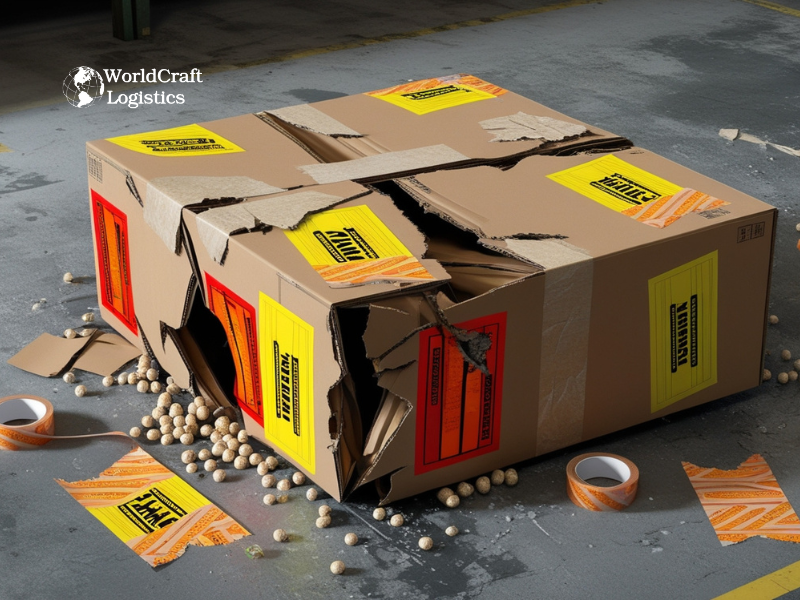
Several factors contribute to shipping damage, and understanding them is essential to minimizing risks. Whether you are a business owner, a logistics provider, or a consumer, knowing the main causes can help prevent unnecessary losses. Here are the most common reasons why goods get damaged during transit:
One of the leading causes of shipping damage is inadequate packaging. If a package does not provide enough cushioning, support, or protection, it can easily be compromised during transit. Some common packaging mistakes include:
Using thin or weak boxes that collapse under pressure.
Failing to use protective fillers like bubble wrap, foam, or packing peanuts.
Leaving too much empty space inside the package, allowing the items to shift.
Using packaging materials that are not suitable for fragile or perishable goods.
Packages often go through multiple touchpoints in the supply chain, from warehouses to sorting facilities and delivery vehicles. During this process, they may be thrown, dropped, or mishandled, leading to shipping damage. This is especially common in high-volume shipping environments where workers must move items quickly.
Incorrect loading methods can cause damage, particularly in freight and bulk shipments. Some key issues include:
Placing heavy items on top of fragile ones, leading to crushing.
Uneven weight distribution, making packages shift or fall during transport.
Overloading pallets or containers, increasing pressure on goods.
Failing to secure items properly, causing them to move excessively.
Extreme weather and environmental factors can also contribute to shipping damage. Exposure to excessive heat, cold, humidity, or moisture can weaken packaging and ruin sensitive products. Some specific risks include:
Rain or humidity seeping into cardboard boxes, causing them to lose their strength.
Freezing temperatures damaging electronics, liquids, or perishable items.
High temperatures warping plastic components or melting adhesives.
All shipments experience vibrations and impact from the movement of trucks, ships, and planes. If goods are not properly secured, they can shift, collide, or wear down due to constant motion. Vibrations can also loosen screws, weaken joints, or cause parts to detach, especially in electronic or mechanical items.
Some items, such as glassware, chemicals, and electronics, require special handling procedures. If these items are not clearly labeled or properly stored, they are at higher risk of breakage or contamination. Common issues include:
Lack of “Fragile” or “Handle with Care” labels.
Storing chemicals near incompatible substances, leading to leaks or spills.
Not using climate-controlled storage for temperature-sensitive items.
Mistakes in labeling, documentation, or shipment routing can also result in shipping damage. Packages may be placed in the wrong shipping conditions or subjected to extended transit times, increasing exposure to handling risks.

By addressing these common causes of shipping damage, businesses can improve their shipping processes and reduce financial losses. Proper packaging, careful handling, and optimized logistics are key to ensuring goods arrive safely at their destination.
Shipping damage has a significant financial and operational impact on businesses, affecting everything from profitability to customer satisfaction. Whether caused by poor packaging, mishandling, or environmental factors, damaged shipments create additional expenses that ripple throughout the supply chain.
When products suffer shipping damage, companies often bear the cost of replacements, refunds, or repairs. This is especially costly for fragile or high-value items, leading to substantial revenue losses.
Damaged shipments usually need to be reshipped, increasing transportation expenses. Businesses may also incur extra costs for return shipping, repackaging, and warehouse handling.
When goods arrive in poor condition, businesses may experience delays in fulfilling orders, stock shortages, and additional lead times for replacements. This slows down operations and affects overall supply chain efficiency.
Damaged inventory requires extra space before disposal or repair, increasing storage costs. Additionally, companies may need to invest in more durable packaging materials to reduce the risk of shipping damage in the future.
Frequent cases of shipping damage can lead to negative reviews, loss of customer trust, and decreased brand loyalty. Customers who receive damaged goods may choose competitors, impacting long-term business growth.
While cargo insurance helps cover losses, frequent claims can raise premiums. Additionally, disputes over responsibility for shipping damage—whether with carriers, suppliers, or warehouses—can lead to legal complications and extra costs.
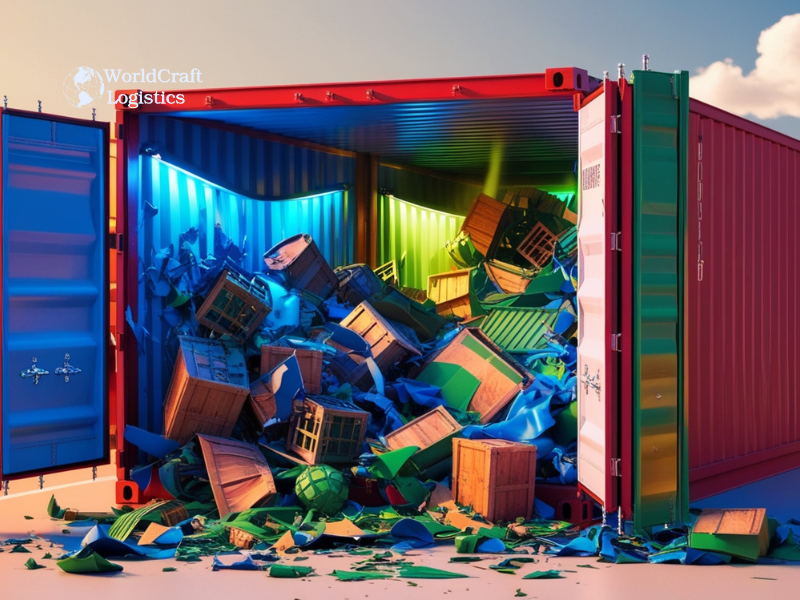
To minimize the cost of shipping damage in the supply chain, businesses should focus on preventive measures such as improved packaging, careful handling, and advanced tracking systems. These steps help protect shipments, reduce financial losses, and maintain customer satisfaction.
Shipping damage in transportation doesn’t just affect individual shipments—it leads to serious financial and operational consequences throughout the supply chain. Damaged goods create direct losses, increase costs, and disrupt logistics, making it essential for businesses to understand the full impact.
Financial Losses and Increased Expenses: When products suffer shipping damage, businesses face costs related to refunds, replacements, or repairs. In some cases, companies may lose entire shipments, forcing them to reorder stock and absorb additional expenses.
Operational Disruptions: Shipping damage can delay order fulfillment, create stock shortages, and force companies to reallocate resources to handle returns or repairs. These disruptions slow down supply chain efficiency and can impact overall productivity.
Customer Dissatisfaction and Brand Reputation: Customers receiving damaged products may leave negative reviews, demand refunds, or stop purchasing from a brand. A poor reputation due to frequent shipping issues can lead to long-term revenue loss.
Environmental Impact: When damaged goods cannot be resold or repaired, they often end up as waste. This increases landfill use and contributes to environmental harm, making sustainability efforts more challenging.
The financial impact of shipping damage varies by industry, product type, and supply chain complexity. Here are some examples with estimated costs:
*Product Replacement and Refund Costs:
*Extra Shipping and Logistics Expenses:
*Warehousing and Handling Costs:
Storing damaged goods for assessment or disposal can cost businesses $10 to $50 per pallet per month.
Additional labor costs for handling returns can add $15 to $30 per shipment.
*Insurance and Liability Claims:
Companies filing frequent claims for shipping damage may see insurance premiums increase by 5% to 15% annually.
Legal disputes over liability can cost businesses thousands of dollars in legal fees.
*Lost Sales and Reputation Damage:
A business experiencing high return rates due to shipping damage may lose 5% to 10% of annual revenue due to dissatisfied customers.
Studies show that 87% of consumers are unlikely to repurchase from a brand after receiving a damaged product.
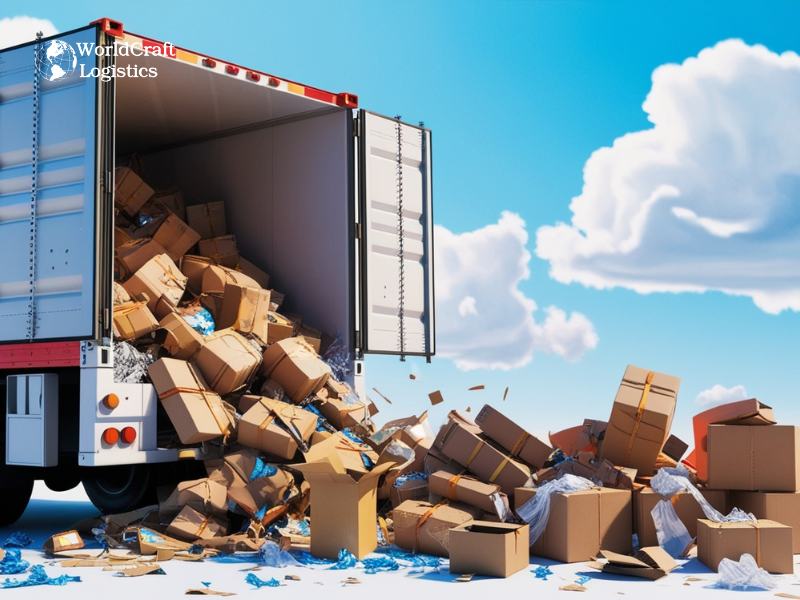
By understanding the costs and consequences of shipping damage in transportation, businesses can take proactive steps to minimize risks. Investing in high-quality packaging, proper handling procedures, and advanced tracking systems can significantly reduce losses and improve supply chain efficiency.
Shipping damage can happen at multiple points throughout the logistics process, from packaging to final delivery. Identifying the most vulnerable areas in shipping helps businesses take proactive measures to reduce losses and improve supply chain efficiency.
Weak or improper packaging: Using low-quality boxes, inadequate cushioning, or improper sealing increases the risk of damage.
Incorrect stacking: Heavy items placed on top of fragile ones can lead to crushing and breakage.
Manual mishandling: Improper lifting, dropping, or rough handling by workers can cause internal and external damage to shipments.
Forklift and pallet jack accidents: Improper use of heavy equipment can puncture, crush, or tilt cargo, leading to shipping damage.
Rapid unloading: Rushed handling at distribution centers or warehouses increases the likelihood of dropped or improperly stacked goods.
Exposure to environmental conditions: Delays in covered storage can expose goods to rain, excessive heat, or freezing temperatures, affecting product quality.
Road vibrations and impact: Goods transported by truck, train, or air experience constant movement, which can lead to shipping damage if not properly secured.
Container shifts in sea freight: Rough waters and improper cargo securing can cause items to shift, collide, or become crushed inside shipping containers.
Temperature fluctuations: Perishable items and temperature-sensitive electronics can be damaged if shipping conditions are not properly controlled.
Overcrowded storage: Limited space can lead to improper stacking, increasing the risk of toppling or compression damage.
Poor climate control: High humidity or extreme temperatures in storage facilities can deteriorate packaging materials and products.
Mismanagement of inventory: Frequent movement of stock or improper tracking can lead to accidental damage.
Improper handling by couriers: Delivery personnel may toss, drop, or squeeze packages into mailboxes or tight spaces, causing structural damage.
Weather exposure: Parcels left outside in rain or direct sunlight can suffer packaging deterioration, especially for moisture-sensitive goods.
Theft and tampering: In some cases, packages may be opened, leading to partial loss or contamination of goods.
Understanding where shipping damage occurs allows businesses to strengthen their logistics strategies. Proper packaging, careful handling, advanced tracking, and damage-resistant shipping methods can significantly reduce losses and improve customer satisfaction.

Shipping damage can lead to financial losses, operational disruptions, and unhappy customers. However, businesses can minimize these risks by following a structured approach to packaging, handling, and transportation. Below is a step-by-step guide to preventing damage in shipping.
Step #1: Choose the Right Packaging Materials
Use sturdy boxes: Opt for double-walled or corrugated boxes for added durability.
Select appropriate cushioning: Bubble wrap, foam inserts, air pillows, or packing peanuts help absorb shocks.
Avoid empty spaces: Fill voids inside the box to prevent items from shifting during transit.
Seal properly: Use strong packing tape with the “H” taping method to secure all edges.
Step #2: Label Shipments Correctly
Use “Fragile” or “Handle with Care” labels for delicate items.
Indicate “This Side Up” if orientation is important.
Include a packing slip inside the package for tracking and verification.
Step #3: Secure Palletized Shipments
Stack properly: Heavier boxes should go at the bottom, lighter ones on top.
Shrink-wrap tightly: Ensure the load is tightly wrapped to prevent movement.
Use corner protectors: Reinforce the edges of palletized goods to avoid impact damage.
Step #4: Train Warehouse and Shipping Staff
Implement proper handling procedures: Train employees on lifting, stacking, and moving shipments safely.
Encourage careful forklift operation: Prevent warehouse accidents by ensuring workers follow safety protocols.
Monitor performance: Conduct regular quality control checks to maintain best practices.
Step #5: Optimize Transportation Conditions
Select the right carrier: Work with reliable shipping companies that handle goods carefully.
Use shock and tilt indicators: These devices help detect rough handling during transit.
Ensure climate control: Sensitive goods like electronics or perishables should be transported in temperature-controlled environments.
Step #6: Implement a Tracking and Inspection Process
Use real-time tracking systems: Monitor shipments for delays or unusual handling.
Inspect goods upon arrival: Check for visible signs of shipping damage before accepting deliveries.
Document damage claims quickly: Take photos and report issues immediately for insurance or replacement purposes.

By following these steps, businesses can significantly reduce shipping damage, protect their products, and enhance customer satisfaction. A well-structured shipping strategy ensures that goods arrive safely, minimizing costs and disruptions in the supply chain.
>>>Read more:
👉 Shipping labels: How to create, print, manage & read parameters accurately
👉 Guide to Poly Mailers: Differences, Advantages, Shipping Savings
One of the biggest concerns for businesses and customers alike is determining who is responsible when shipping damage occurs. Carriers, including freight companies, couriers, and postal services, operate under specific liability rules that define when they are accountable for damaged goods.
Carriers may be held liable for shipping damage under certain conditions, including:
Improper handling: If the carrier mishandles packages during transit, loading, or unloading, they may be responsible for the damage.
Failure to follow proper shipping instructions: If a carrier disregards special handling requirements (e.g., "Fragile" or "Keep Upright" labels) and damage occurs, liability may fall on them.
Lost or stolen shipments: Many carriers are liable for loss, theft, or missing items during transit unless they prove proper delivery.
However, most carriers have limitations on their liability, meaning they are not always responsible for every instance of damage.
There are several situations where carriers may not be held accountable for shipping damage, including:
Insufficient packaging: If the shipper (seller or sender) fails to package items properly, the carrier may deny responsibility.
Acts of nature or force majeure: Carriers are not liable for damage caused by natural disasters, extreme weather, or other uncontrollable events.
Improper address or delivery instructions: If incorrect details lead to mishandling or misdelivery, the carrier may not be responsible.
Declared value limitations: Some carriers have limited liability unless the shipper pays for additional insurance or declares a higher shipment value.
To minimize financial loss from shipping damage, shippers should:
Use proper packaging: Ensure items are well-protected to reduce carrier liability disputes.
Purchase shipping insurance: Insurance covers damages beyond carrier liability limits.
Choose reliable carriers: Work with reputable logistics providers known for safe handling.
Document shipments: Take photos and record package conditions before and after shipping for claims.
While carriers may bear responsibility for shipping damage in some cases, businesses must take proactive steps to safeguard their goods. Understanding liability terms and insurance options can help minimize financial risk and ensure smoother shipping operations.
Proper packaging plays a crucial role in preventing shipping damage and ensuring that goods arrive in perfect condition. The right materials protect items from shocks, vibrations, moisture, and rough handling throughout the supply chain. Below are the most commonly used packaging materials and their effectiveness in minimizing damage.
Why It’s Effective: Strong, lightweight, and durable, corrugated cardboard provides a protective outer layer for various products.
Best Use Cases: Ideal for shipping fragile items, electronics, and consumer goods.
Tip: Use double-wall or triple-wall boxes for heavier shipments to enhance protection.
Why It’s Effective: The air-filled bubbles absorb shocks and vibrations, reducing impact damage.
Best Use Cases: Protecting delicate items such as glass, ceramics, and electronics.
Tip: Wrap items with multiple layers and secure them with tape to prevent movement.
Why It’s Effective: Foam materials conform to the shape of products, providing a snug fit and preventing movement.
Best Use Cases: Shipping high-value or precision equipment like medical devices and machinery parts.
Tip: Use custom-cut foam inserts for added stability and protection.
Why It’s Effective: These materials fill empty spaces inside boxes, preventing goods from shifting during transit.
Best Use Cases: Ideal for lightweight, irregularly shaped, or mixed-product shipments.
Tip: Choose biodegradable packing peanuts for an eco-friendly option.
Why It’s Effective: Provides a tight, protective seal around products and pallets, preventing dust, dirt, and moisture exposure.
Best Use Cases: Securing bulk shipments and palletized goods.
Tip: Use UV-resistant shrink wrap for products stored outdoors or in transit for extended periods.
Why It’s Effective: Prevents crushing and impact damage by reinforcing corners and edges.
Best Use Cases: Protecting furniture, appliances, and heavy-duty goods during handling.
Tip: Combine with pallet strapping to keep large shipments secure.
Why It’s Effective: Shields products from water damage, leaks, and unauthorized access.
Best Use Cases: Shipping food, pharmaceuticals, and high-value items.
Tip: Use poly mailers, water-resistant coatings, and security seals for added protection.
Choosing the right packaging materials is essential to reducing shipping damage and ensuring that goods reach customers safely. Businesses should assess product fragility, transportation conditions, and handling risks to determine the best packaging solutions. By investing in high-quality materials and best practices, companies can minimize damage-related losses and enhance customer satisfaction.
Shipping damage can be costly, frustrating, and disruptive to your business. Whether you're dealing with broken goods, lost shipments, or frequent claims, unreliable shipping solutions can harm your bottom line. At Worldcraft Logistics, we specialize in secure and damage-free bulk shipping, ensuring your cargo arrives in perfect condition.
Why Choose Worldcraft Logistics?
✅ Advanced Packaging Solutions – We use industry-leading protective materials and secure loading techniques.
✅ Reliable Freight Handling – Our experienced team minimizes risks through careful transportation and warehousing.
✅ Custom Shipping Strategies – Tailored logistics plans reduce costs and prevent unnecessary damage.
✅ Comprehensive Cargo Insurance – Added protection for high-value shipments gives you peace of mind.
Stop losing money on damaged shipments—ship smarter with Worldcraft Logistics. Contact us today and experience safer, more efficient bulk shipping!
Shipping damage is a major concern for businesses, leading to financial losses, supply chain disruptions, and dissatisfied customers. From understanding its causes to implementing preventative measures, companies must take proactive steps to protect their shipments. By using the right packaging materials, choosing reliable carriers, and working with a trusted logistics provider like Worldcraft Logistics, businesses can significantly reduce the risks of damaged goods.
Investing in better shipping solutions not only protects your products but also enhances customer satisfaction and strengthens your business reputation. Take action today and ensure your cargo arrives safely—because every shipment matters.
SEO
Digital Marketing/SEO Specialist
Simon Mang is an SEO and Digital Marketing expert at Wordcraft Logistics. With many years of experience in the field of digital marketing, he has shaped and built strategies to effectively promote Wordcraft Logistics' online presence. With a deep understanding of the logistics industry, I have shared more than 500 specialized articles on many different topics.

Education
01/05/2025

Education
02/18/2025
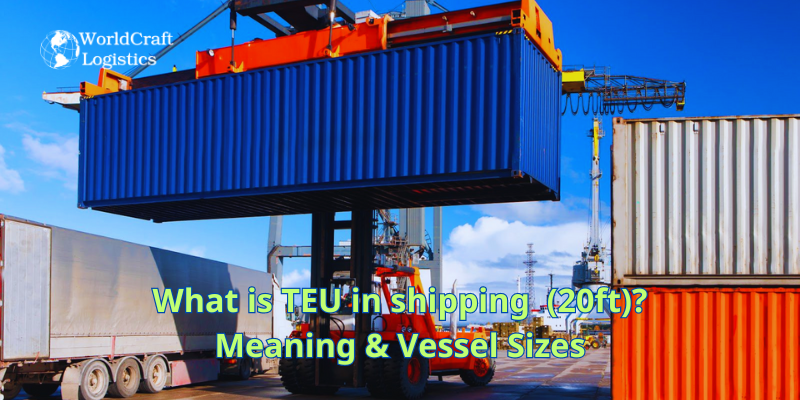
Education
01/01/2024
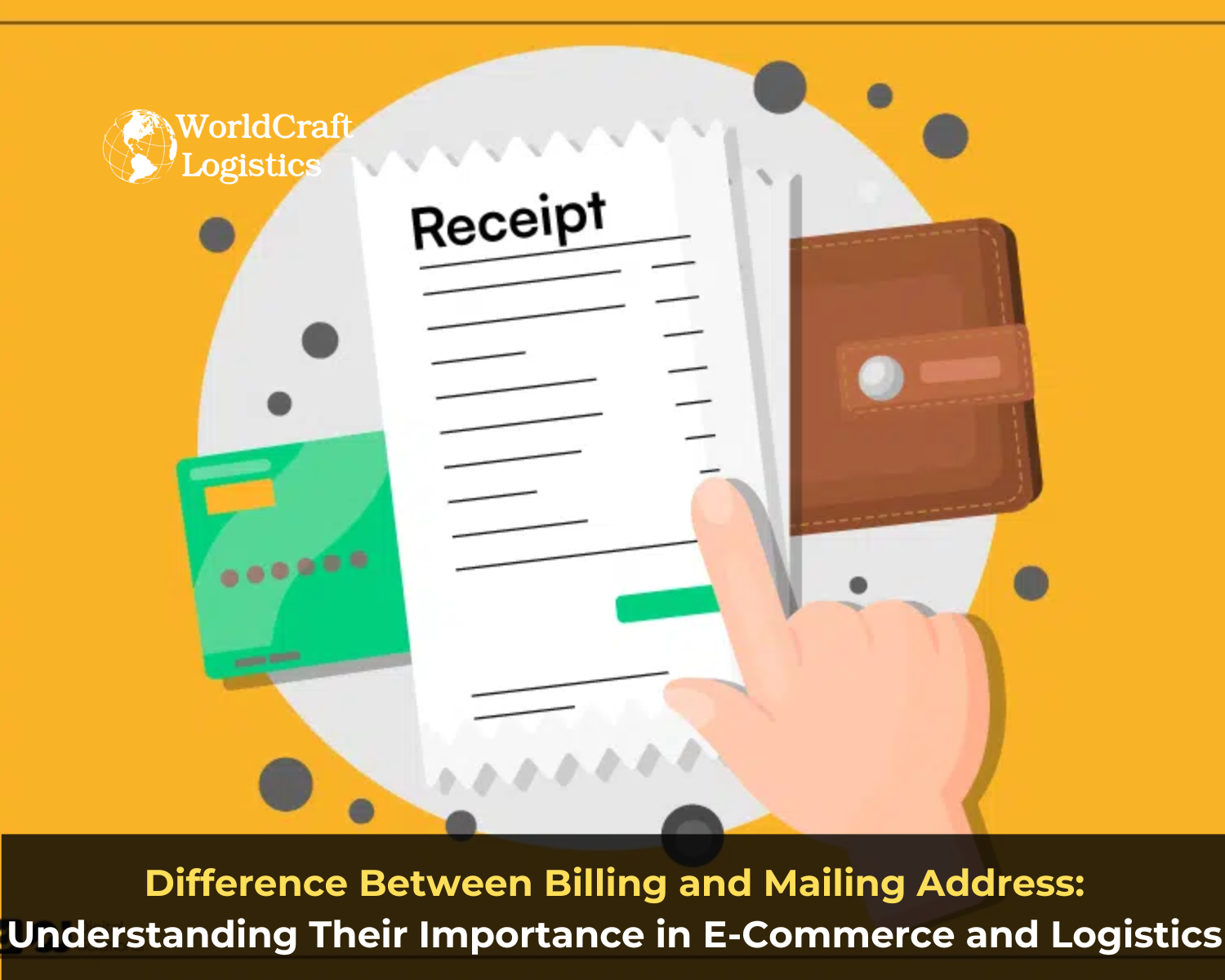
Education
08/28/2024

Education
11/13/2023